But in terms of character development, I have to say that one positive/negative of now four (!) years of serious beer hunting has been my changing tastes in brews. What fascinated and intrigued me before might still continue to do so, or it might not. Truth be told, I'm settling into a familiar rut, where everything has to be big n' bold - well-hopped monster IPAs, rich and hearty imperial stouts, roasted and creamy porters and sweet and hearty barleywines and old ales. Don't get me wrong; I will always love a well-made craft brew and am damned happy for the privilege of doing so, it's just that some styles are more appealing than others. What is striking to me is noticing which styles are less interesting to me than before. When I first really started getting into beer - in the summer of 2009 - I thought that anything Belgian was instantly a hit. It all was so new and exciting to me, so different from the sort of beer I used to drink, so in the case of the latter, anything with "Brasserie" or "Brouwerij" or "Abbaye" was instantly going to get high accolades from me. This remained the standard for a few years now, as I continued to seek out and explore new breweries and styles with reckless abandon. In the past few months, however, my love for Belgian brews has been waning a bit. I really am not sure what to pin this on; it's not a case of oversaturation, as despite having probably a hundred different versions of the American IPA or Russian Imperial Stout, I've hardly met a brew of those styles I haven't liked and I am not bored with them whatsoever. So it must be something specific to Belgian brewing that is disagreeing with me. Maybe it is the particular esters that come from the fermentation process, or if it is the yeast itself I don't like. It could be that due to their carbonation I find they give me a headache. But hold on a minute - there are still tons of Belgian brews that I like out there. Westvleteren 8 and 12 remain brews I would happily drink monogamously for the rest of my life, and I've developed a real passion for Flemish reds and lambic sours, which is in tune with my overall trend towards the bigger and the bolder brews of the world. St. Bernardus 12, Maudite, Fin du Monde - these are all brews that I adore and wish I had in my fridge right now.
So what's the deal? There must be some particular characteristics about Belgian ales that, if present, lead me to be less satisfied with the overall product. Maybe if I can nail those down, I can better seek out those brews I'm going to enjoy. A noble quest, to say the least. Fortunately, I've been able to get my hands on some Belgian/Belgian-style brews of late, so I have some subjects to experiment with. Everyone put on their finest beer jackets and beer trousers, and be sure to be wearing your Beer Helmet (safety first, people!), as we dive in to some Belgian brews!
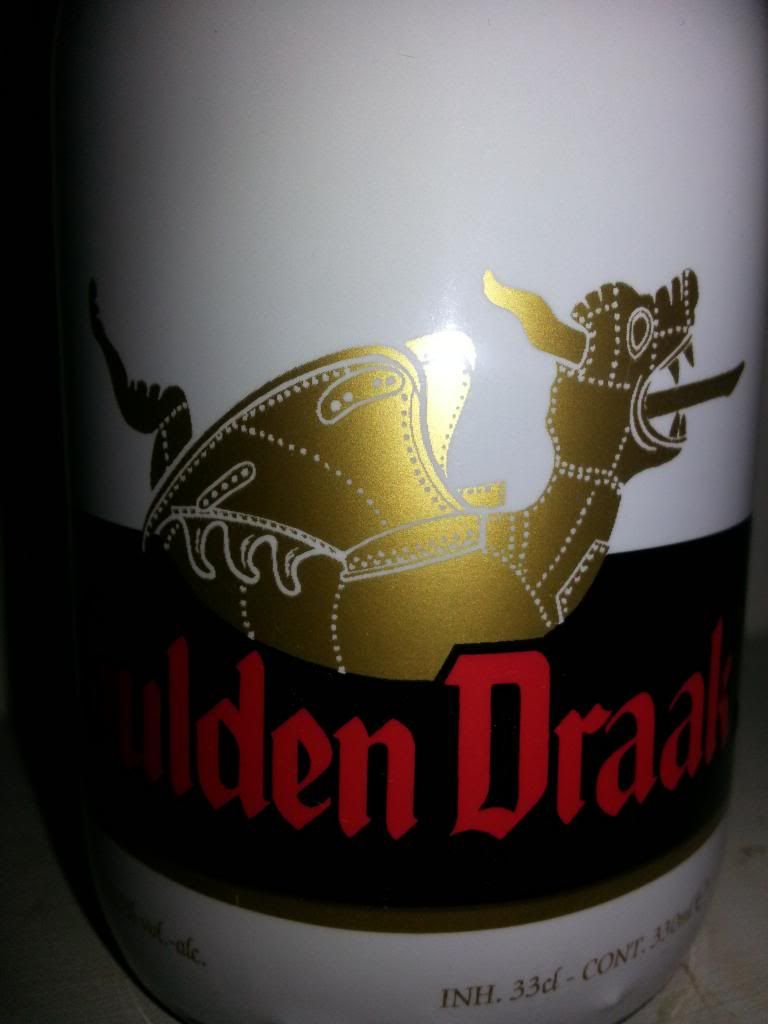 Beer: Gulden Draak ("Golden Dragon")
Beer: Gulden Draak ("Golden Dragon")Brewery: Brouwerij van Steenberge (Ertvelde, Belgium)
Type: Belgian Strong Dark Ale
ABV: 10.5%
In the great debate over the title of "Best Beer in the World", there are the recent usual suspects, such as Westvleteren 8 or 12, Russian River's Pliny the Elder Double IPA, Rochefort 10, perhaps a coffee stout from Founders or Goose Island. With a few exceptions, it seems to be the American craft brews leading the way, with a few Belgians hanging along for the ride. Gulden Draak - the Golden Dragon - may not top the list at the moment, but it has been a perennial contender in that regard. The beer is considered such a quality Belgian standard that the brewery, Van Steenberge, devotes an entire webpage to this brew alone, despite having dozens of other brews in its arsenal. As the site explains, the brew's signature medieval dragon figure is inspired by a similar golden statue located atop the belfry in one of the main churches in nearby Ghent. The dragon istelf is apparently in honour of a late Norwegian king's figurehead, which graced the bowsprit of the ship he sailed on crusade in the Holy Land. This was the so-called Norwegian Crusade, perhaps the most successful minor crusade of the time, organized and carried out entirely by King Sigurd I. Somehow, the dragon wound up in Flanders - if the legend is true. Will the legend of this brew's quality prove to be true?
The bottle is specifically designed to be unique, though it does bear a striking similarity to Duvel's signature vessel. With that in mind, I figured that the Duvel chalice would be just the ticket for this brew.
It's a bit tough to see - the winter light isn't helping matters - but this brew is is a dark caramel amber colour, almost ruby when held to the light. Sturdy inch and a half of head that recedes slowly into a thick ring. Great retention, lovely sticky lace.
This brew absolutely needs to be brought to almost room temperature, because the cold absolutely kills both nose and flavour. When it does warm up a little, there's a pleasant fig/raisin smell that is both fruity and tart, which pairs nicely with a rich caramel sweetness. Unfortunately what is holding this brew back from greatness, for me anyways, is the strong yeasty much that won't go away. I'm fairly certain that yeast and overcarbonation are what I'm not digging about Belgian ales, so this doesn't bode well.
Ah, but all fears are quickly allayed - this is a terrific beer. While it doesn't leave me utterly speechless like, say, the Westvleteren or even the St. Bernardus Abt, I was still very impressed with this. The yeast is nowhere near as potent as in the nose, and the carbonation is right on the money: vigorous enough to prevent the brew from being heavy, but mild enough to not be overpowering or burpy. Loving the puckery raisin and portlike quality to the brew, which has a slightly nutty chocolate finish.
Well shut my mouth, Belgian beer comes flying out of the gate and delivers a strong knockout punch. One of the rare benefits of being a beer drinker in Ontario is that - usually - when we get imports like this, the price is downright reasonable, and this brew certainly fits that bill (under $5 at least). It might not be one of those monster Belgian abbey brews, but it is tasty nonetheless! (Grade A-)
That one went pretty well - was it a fluke? Let's try another of the style.
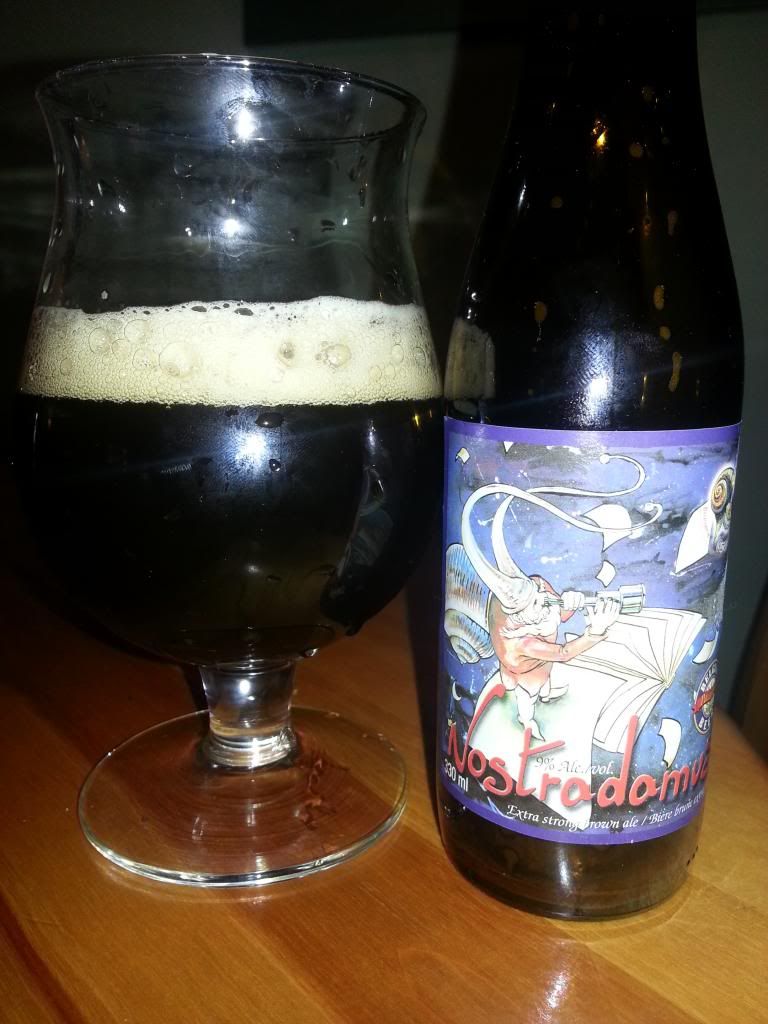 Beer: Nostradamus
Beer: NostradamusBrewery: Brasserie Carcarole (Famignol, Belgium)
Type: Dark Ale (Strong)
ABV: 9%
For a brew named for that historical prognosticator extraordinaire, they picked quite an appropriate label, because - like with Nostradamus - I have no idea what is going on here, but it looks compelling. You really have to unpack this label, because there is so much happening and none of it makes any sense. Something about a mantis shaped devil hat, the planet Saturn, a snail, and some freaky snail-hybrid standing on a book shoving a telescope up his nose, which somehow means that the world will end in 2014. The label of a crazy person. Maybe there's some good beer inside.
For good luck, let's stick with the Duvel goblet. Deep caramel chestnut in colour, and about a half inch of lively big-bubbled head that recedes into a thick ring. Good retention on this.
After warming for a few minutes, the nose comes through, and it is quite nice. Brown sugar, caramel, figs and raisins, a fruity tartness, and only a mild yeast. Not too shabby.
Initially quite dry, but this brew needs a good amount of time to open up, because when it does the sweetness comes through a great deal. Sweet and sugary at first, with some of that tart figgy raisin taste coming through towards the finish alongside some chocolate and medicinal herbal hops. Mercifully, no yeasty taste to it, which really does help me enjoy the brew more. Strong carbonation at first, but this eases considerably. The airiness helped make the brew quite easy to drink without feeling to heavy.
Quite nice, a good little Belgian ale this one is. I'm really thinking it's the yeast, because I enjoyed this a great deal, though the zippy carbonation was a bit much. Still, this was an enjoyable brew that got better with each sip. (Grade: B+)
The two darker brews were good; what about some lighter fare? Or better yet, what about a Trappist ale?
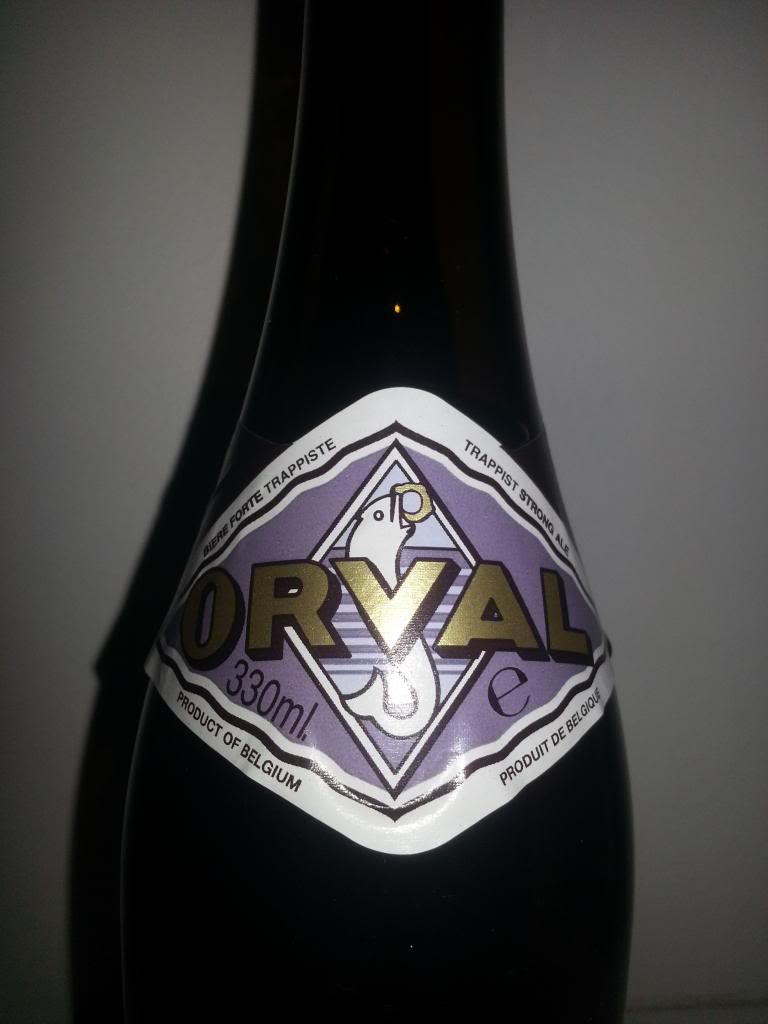
Beer: Orval
Brewery: Brasserie D'Orval (Villers D'Orval, Belgium)
Type: Belgian Pale Ale
ABV: 6.2%
Very excited to see this back on the LCBO shelves. Having just returned from Buffalo this weekend and feeling depressed about the beer-selling situation in Ontario (as usual), this was a welcome treat. As I mentioned before, thanks to Ontario's mass-purchasing racket, when we do eventually get Belgian ales like this one, the price is usually vastly different from what they pay in the States. I'd still trade the price-difference for variety in a heartbeat, but staying positive is important, because otherwise I'd just weep about the state of things.
What's the deal with the Orval logo you may ask? Is it a mutated narwhal? Mutated ram-fish? Something mutated? Took me a while too, until I used a handy website called 'Goggle.' Turns out, there is a perfectly reasonable (read: mythical and fanciful) explanation. The idea is that about 1000 years ago, a princess was travelling through this Belgian valley and stopped at a nearby pond for non-pointless reasons. Somehow, she managed to drop her wedding ring into the water, thus setting about the conditions for the possible return of Sauron. She was doubly upset because her husband had recently died, and so she prayed for the ring to be returned. Miraculously, a trout surfaced, carrying in its mouth the lost ring. In thanks, the princess dubbed the area the "golden valley" - or, in French, "or" "val". Hence, Orval. Neat.
As a Trappist brewery, the beer at Orval must satisfy the conditions of Trappist membership - the beer must be brewed on site (inside a Trappist, or Cistercian monastery), with the profits being used either for charity or maintaining the abbey. Bonus points if you remember the names of all the Trappist breweries! Though Orval releases two brews, this one is by far the most common, so much so that simply calling it "Orval" usually suffices.
Poured into a goblet. A unique colour, this - a dark, hazy straw hue, with perhaps some tan in there as well. (As per usual, the low light of the winter necessitates using the flash, so the brew looks a lot darker in the picture than it really is). The head is absolutely brilliant on this: big and billowing, with remarkable staying power and generating some wonderful sticky lace. Perfect.
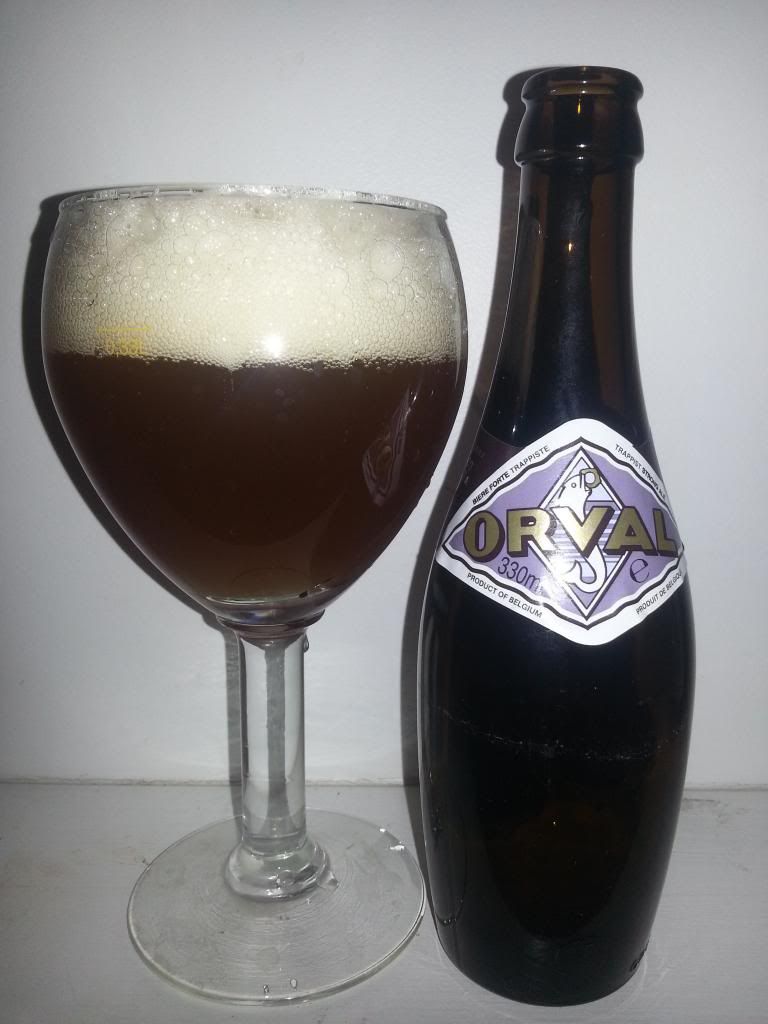 Orval is one of my favorite Trappist ales because it is so dry. I find that so many Belgian ales are much too sweet; this coupled with the yeasty flavour tends to put me off the brew and give me a headache. Orval is much more delicate and light, which really appeals. The nose has a nice yeasty musk to it, with floral hops, grapefruit and a mixed back of fruit - banana, apple and perhaps some cherry. Very pleasant.
Orval is one of my favorite Trappist ales because it is so dry. I find that so many Belgian ales are much too sweet; this coupled with the yeasty flavour tends to put me off the brew and give me a headache. Orval is much more delicate and light, which really appeals. The nose has a nice yeasty musk to it, with floral hops, grapefruit and a mixed back of fruit - banana, apple and perhaps some cherry. Very pleasant.This is a wonderful dry Belgian ale. Tart, a bit musky, and with a cider-like dryness, Orval is always welcome in my cellar. Apple, grain husks, dry grape, yeast and spices. Lighter bodied, mild carbonation, this brew goes down extremely well.
Stock up on these brews if you can - they only get up to Ontario every so often, and when they do, jerkstores like me tend to buy them all up. A different brew from the usual Trappist fare like Chimay Red and Westmalle Dubbel, and those who prefer drier Belgian ales like saisons and dry tripels will probably dig this one a great deal. (Grade: A)
I realize now that in my post about how I don't really like Belgian ales that much any more, I have spent the entire time positively reviewing Belgian ales that I really did enjoy. Stupid? Probably. I think what happened was that when I started this post, I started thinking about the kind of Belgian brews that I don't like and zeroed in on those characteristics that bugged me, and then actively sought out brews that did not fit those categories. This, coupled with a couple of fortunate finds in the Nostradamus and Gulden Draak made this job even easier. So really, what ended up happening here was that through this post, I managed to convince myself to stick with the Belgian ales - seek out the ones that I love, and ignore or move past those that aren't to my liking. I'll try to avoid sweeping generalizations in the future!
Belgium: always a pleasure.

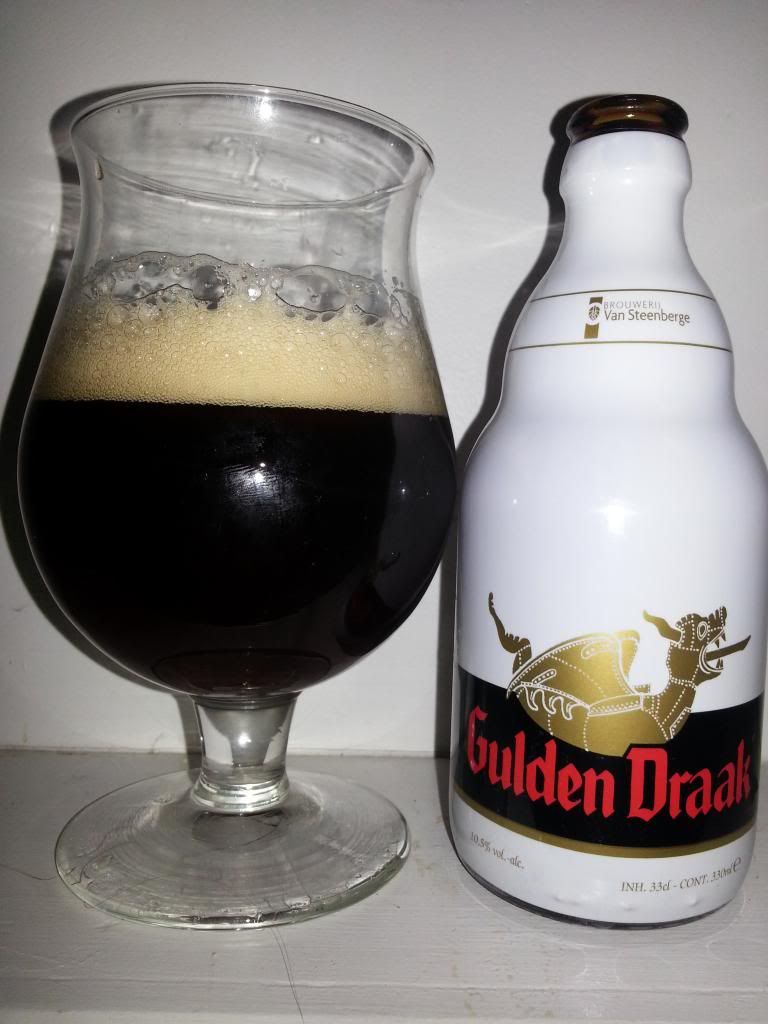
No comments:
Post a Comment